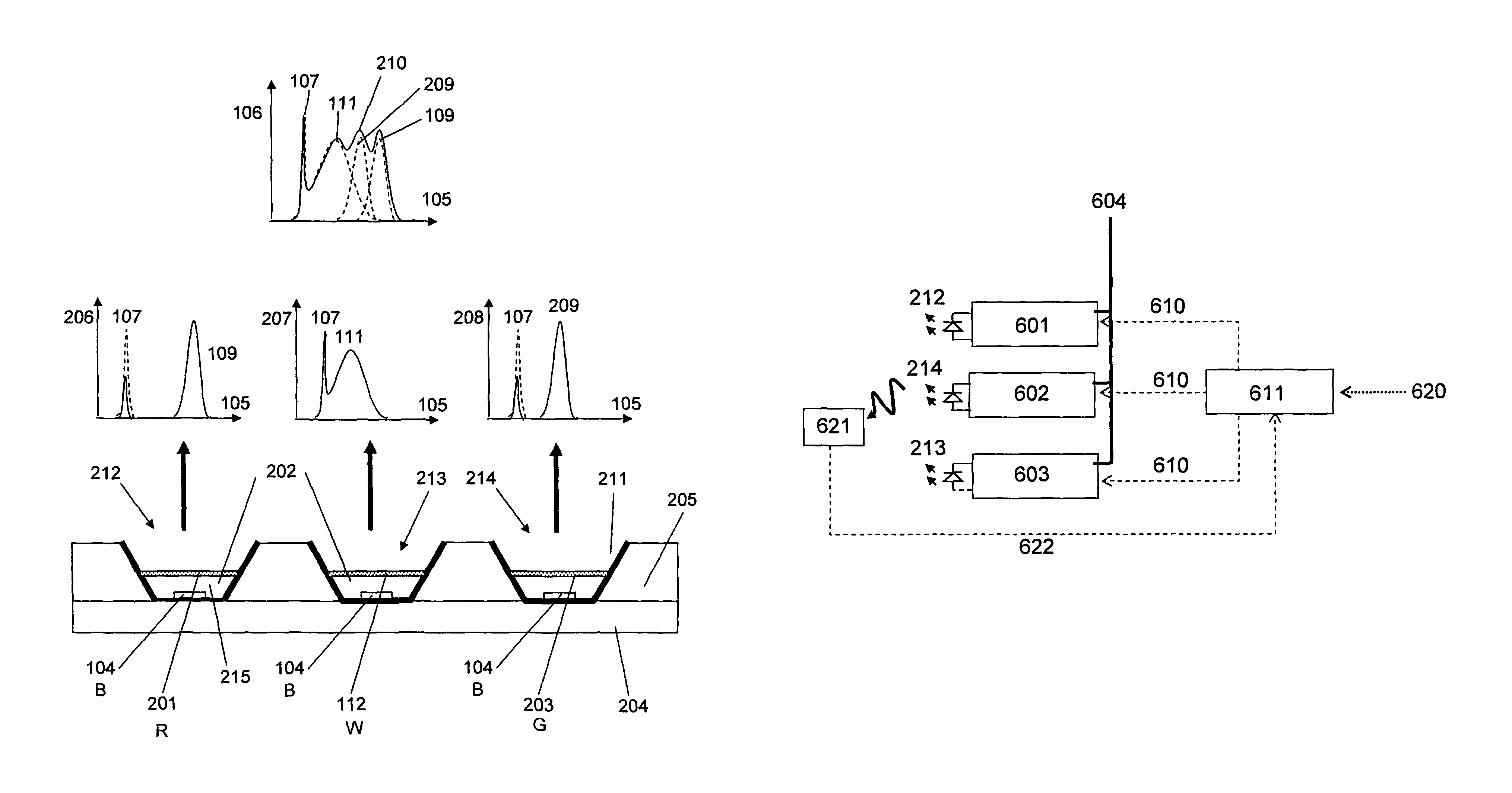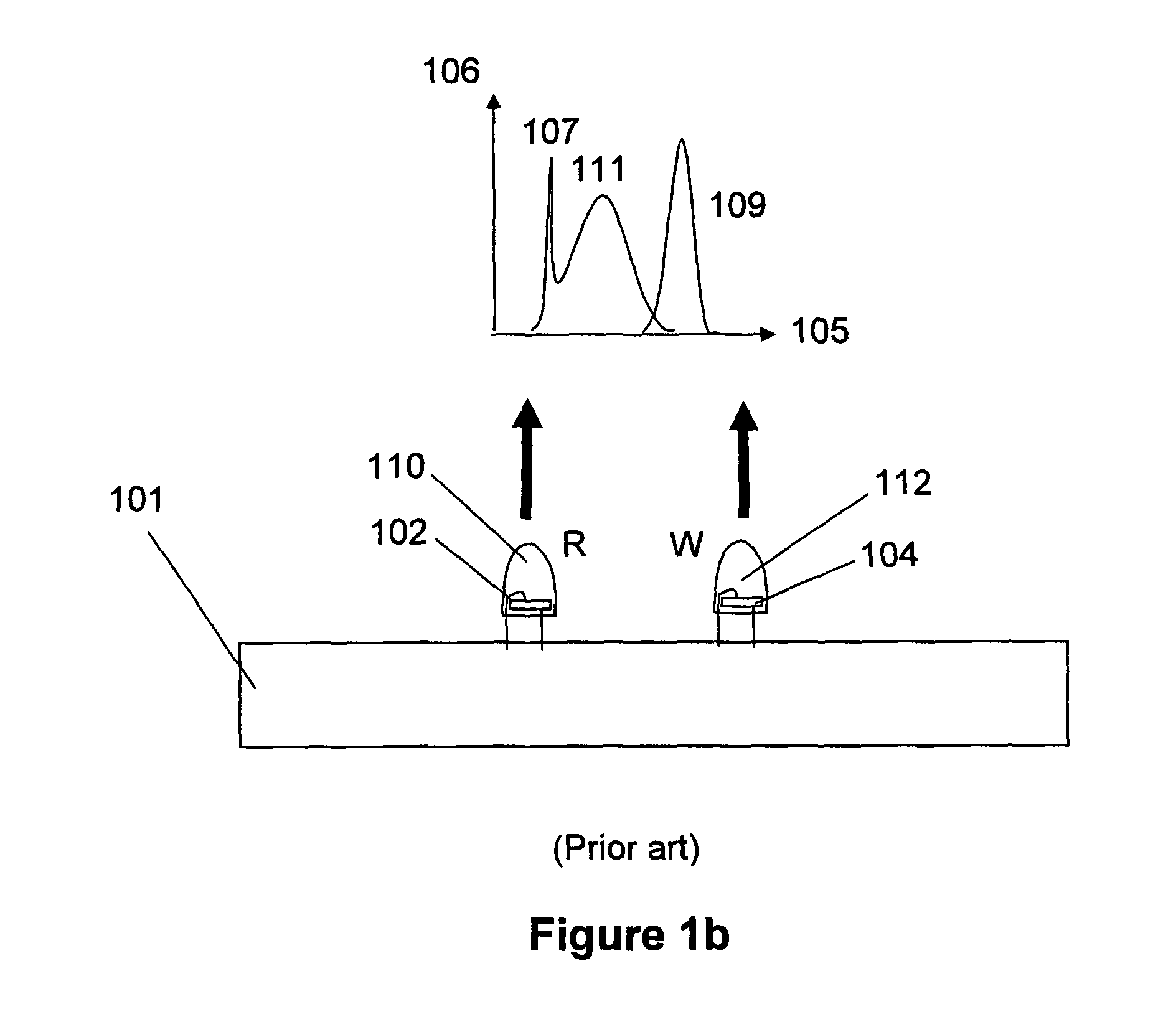Tunable colour LED module
a light-emitting diode and led module technology, applied in the direction of lighting and heating apparatus, process and machine control, instruments, etc., can solve the problems of poor colour rendering index, similar lifetime degradation problems, and are typically very difficult to monitor, and achieve uniform chromaticity properties, long and controlled lifetime, and low cost
- Summary
- Abstract
- Description
- Claims
- Application Information
AI Technical Summary
Benefits of technology
Problems solved by technology
Method used
Image
Examples
Embodiment Construction
[0094]The object of the present invention is to provide a high wall plug efficiency low cost, low thermal resistance LED chip on board (COB) module and control system having a light output that is flexible and intelligent capable of tuning colour chromaticity, CRI and intensity. The tunability is defined by the control system and may be pre-set during manufacture or actively defined or monitored in the end user lighting application.
[0095]The present invention can be incorporated using a light emitting device (LED) of any semiconductor material system such as, but not restricted to, InGaN, InGaP, InGaAs, InP, or ZnO. However, for illustrative purposes and as a preferred example, Blue wavelength InGaN semiconductor LED having a vertical contact pad structure (sometimes termed vertical LED structure, or thin GaN) will be described in the bulk of the detailed description of the invention.
[0096]In the first aspect of the present invention an LED COB module is devised, as shown in FIG. 2a...
PUM
 Login to View More
Login to View More Abstract
Description
Claims
Application Information
 Login to View More
Login to View More - R&D
- Intellectual Property
- Life Sciences
- Materials
- Tech Scout
- Unparalleled Data Quality
- Higher Quality Content
- 60% Fewer Hallucinations
Browse by: Latest US Patents, China's latest patents, Technical Efficacy Thesaurus, Application Domain, Technology Topic, Popular Technical Reports.
© 2025 PatSnap. All rights reserved.Legal|Privacy policy|Modern Slavery Act Transparency Statement|Sitemap|About US| Contact US: help@patsnap.com



